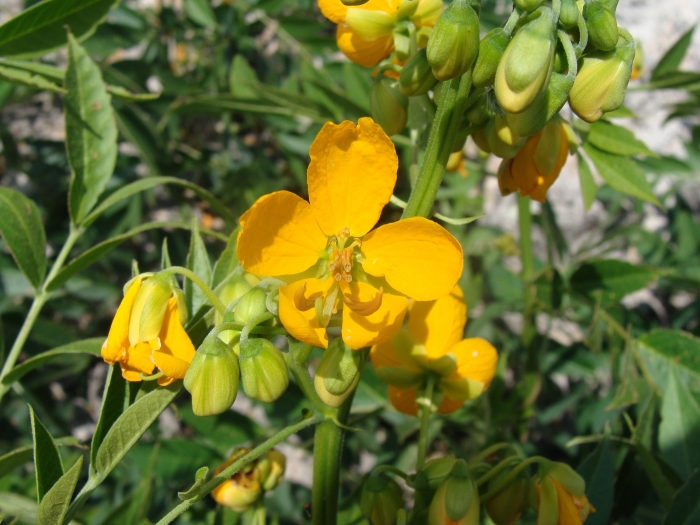Woolly Senna
(Senna hirsuta)
Woolly Senna (Senna hirsuta)
/
/

Alexis López Hernández
CC BY 4.0
Image By:
Alexis López Hernández
Recorded By:
Copyright:
CC BY 4.0
Copyright Notice:
Photo by: Alexis López Hernández | License Type: CC BY 4.0 | License URL: http://creativecommons.org/licenses/by/4.0/ | Rights Holder: Alexis López Hernández | Publisher: iNaturalist | Date Created: 2020-08-23T15:42:01-07:00 |

























Estimated Native Range
Summary
Senna hirsuta, commonly known as woolly senna, is a semi-deciduous shrub or herbaceous perennial native to tropical regions of Tropical and sub-Tropical America. It has naturalized in various parts of the world, including Africa, South Asia, Southeast Asia, and Queensland, Australia. Woolly senna typically reaches up to 8 feet 2 inches in height and is characterized by its pinnate leaves covered in fine hairs, giving it a woolly texture. The plant produces bright yellow flowers that bloom in clusters, mainly during the warm season, which are moderately showy and attract pollinators. The resulting seed pods are flattened and cylindrical, containing several seeds.
Woolly senna is valued for its rapid growth and adaptability to a range of soil types, although it prefers well-drained soils. It is drought-tolerant once established and thrives in full sun to partial shade. In cultivation, it is used for its ornamental foliage and flowers, often in borders or as a specimen plant. However, gardeners should be cautious as Senna hirsuta can become invasive outside its native range, spreading aggressively in suitable climates. It is also used medicinally in some cultures, although care must be taken due to the presence of compounds that can be toxic if ingested in large quantities.CC BY-SA 4.0
Woolly senna is valued for its rapid growth and adaptability to a range of soil types, although it prefers well-drained soils. It is drought-tolerant once established and thrives in full sun to partial shade. In cultivation, it is used for its ornamental foliage and flowers, often in borders or as a specimen plant. However, gardeners should be cautious as Senna hirsuta can become invasive outside its native range, spreading aggressively in suitable climates. It is also used medicinally in some cultures, although care must be taken due to the presence of compounds that can be toxic if ingested in large quantities.CC BY-SA 4.0
Plant Description
- Plant Type: Shrubs
- Height: 3-6 feet
- Width: 3-6 feet
- Growth Rate: Moderate
- Flower Color: Yellow
- Flowering Season: Summer, Fall
- Leaf Retention: Deciduous
Growth Requirements
- Sun: Full Sun
- Water: Medium
- Drainage: Fast, Medium
Common Uses
Border Plant, Butterfly Garden, Low Maintenance, Water Garden
Natural Habitat
Native to tropical regions of Central and South America
Other Names
Common Names: Hairy Senna , Woolly Wild Sensitive Plant
Scientific Names: Senna hirsuta , Cassia hirsuta , Cassia hirsuta , Cassia longisiliqua , Cassia sulcata , Cassia tomentosa , Cassia tomentosa , Cassia venenifera , Ditremexa hirsuta
GBIF Accepted Name: